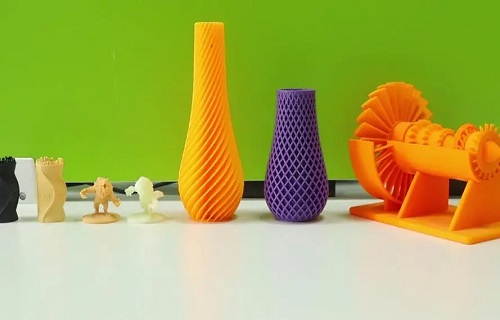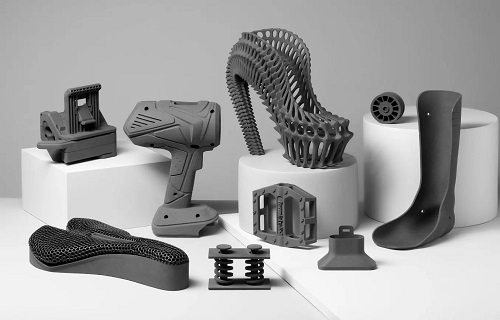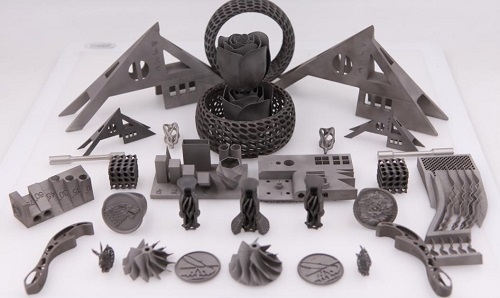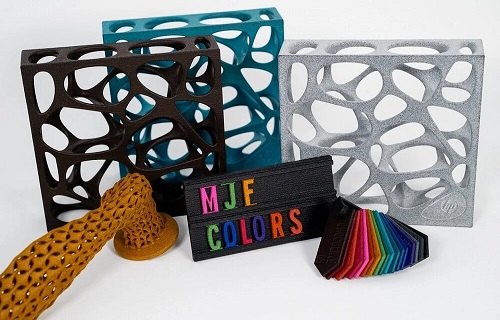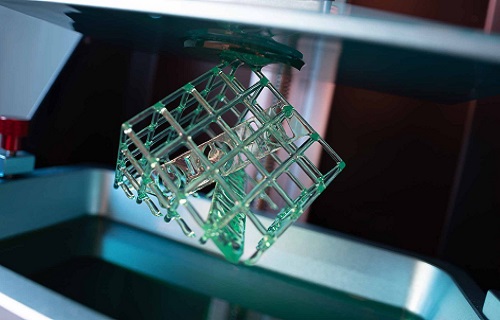Professional 3D Printing Service
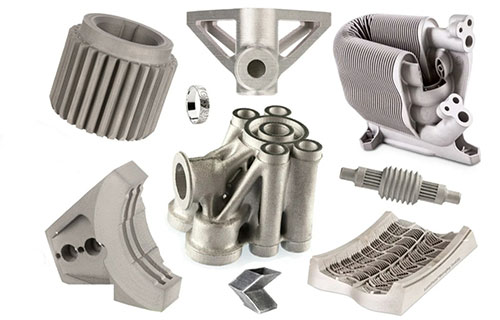
3D Printing: High-Quality Rapid Prototyping and Production Parts
Experience the industry-leading 3D printing solutions provided by our experts! As a full-service additive manufacturing provider, we are able to quickly turn around prototypes and produce complex custom parts quickly and accurately. Within a week, we can turn the design in the CAD file into a finished 3D printed object. Whether you need a single model or mass production, our multifunctional printers can produce components with precise dimensions, fine details, strict tolerances, and excellent surface smoothness. As your trusted manufacturing partner, we provide affordable and customized solutions based on your application, as well as early quotes and fast delivery times. Let our engineers optimize the design for your printing and mass production. Contact us immediately to discuss how we can take your product to the next level using advanced 3D printing technology!
Custom Personal 3D Printing Additive Manufacturing Service
By utilizing cutting-edge additive technology, we manufacture cost-effective components with unparalleled functionality and quality. As an industry leader in providing the most diverse materials, our well-trained team utilizes 8 advanced plastic and over 60 metal 3D printing processes. This includes selective laser sintering, melt deposition modeling, stereolithography, direct metal laser sintering, PolyJet, Carbon DLS, Nexa3D LSPc, and powder bed melting methods. By utilizing industrial grade equipment such as high-performance Stratasys Fortus 900mc and Fortus 450 FDM platforms, as well as top-notch powder bed fusion solutions from EOS, Concept Laser, and SLM solutions, we design precision parts with unparalleled resolution, strength, and surface quality. As a comprehensive service provider, our inclusive solutions drive the forefront of technology and transform innovative designs into final products. Contact us immediately to explore how we can maximize your application potential through cutting-edge additive manufacturing.
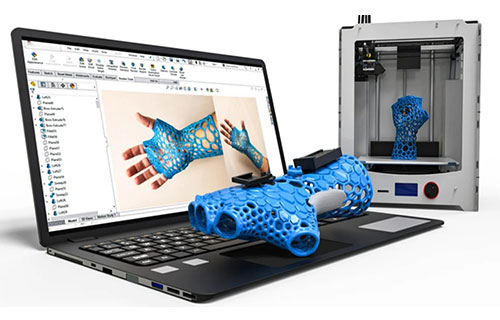
Thermoplastic 3D Printing
Selective Laser Sintering (SLS) 3D Printing Service
Selective Laser Sintering (SLS) 3D printing service is a technology that uses lasers to melt nylon powder into solid parts. SLS 3D printing services provide high precision, durability, and functionality for various applications such as prototyping, small batch production, and end use parts. SLS 3D printing services do not require supporting structures, reducing material waste and post-processing time. SLS 3D printing services can produce parts with complex geometric shapes, fine details, and smooth surfaces. SLS 3D printing services can also use different materials, such as glass filling, carbon filling, or flame-retardant nylon, to achieve specific performance and capabilities.
HP Multi Jet Fusion (MJF) 3D Printing Service
HP Multi Jet Fusion (MJF) 3D printing service is a cutting-edge technology that produces complex and functional parts quickly, accurately, and cost-effectively.MJF uses fine-grained materials for high resolution and smooth surface finishes.MJF also supports full-color printing and post-processing options such as dyeing, penetrating, and coating. With MJF, you can create prototypes, end-use products, or customized parts with high performance and durability.
Fused Deposition Modeling (FDM) 3D Printing Service
Fused deposition modeling (FDM) 3D printing services is an additive manufacturing technology that uses thermoplastic filaments to create solid objects. The filament is heated and extruded layer-by-layer through a nozzle onto a build platform.FDM 3D printing services are ideally suited for rapid prototyping, functional testing, and low-volume production of complex parts.FDM 3D printing services are available in a wide range of materials, colors, and finishes, as well as high precision and durability.
Thermoset 3D Printing
Stereolithography (SLA) 3D Printing Service
Stereolithography (SLA) 3D printing service is a type of additive manufacturing that uses liquid resin and ultraviolet light to create solid objects.SLA 3D printing produces high-quality parts with smooth surfaces, intricate details, and complex geometries.SLA 3D printing is suitable for applications such as prototyping, jewelry making, dental implants, etc.SLA 3D printing works by curing the resin layer by layer until the final object is complete. The thickness of each layer can vary from 10µm to 50µm, depending on the desired resolution and print time.SLA 3D printing requires support structures, resin cleaning, support removal, and post-curing to ensure stability and durability of the part.
PolyJet 3D Printing Service
PolyJet 3D Printing Services is a technology that allows you to create high-resolution, multi-material and full-colour models in a fast and cost-effective way.PolyJet 3D Printing Services uses a jetting process that deposits tiny liquid photopolymer droplets onto a build tray, where they are cured with UV light. The result is a smooth, detailed surface that mimics the look and feel of the final product.PolyJet 3D printing services are ideal for prototyping, design verification and testing applications that require complex geometries, intricate detail and realistic textures.
Production Photopolymer 3D Printing
Nexa3D LSPc® Resin 3D Printing Service
The Nexa3D LSPc® Resin 3D Printing Service is a fast and reliable way to produce high-quality parts with complex geometries and fine details.LSPc® stands for Lubricant Sublayer Light Curing, a patented technology that uses a transparent film to reduce the adhesion between the resin and the build platform, resulting in faster layer changeovers and higher print speeds. With Nexa3D LSPc® resin 3D printing services, you get a range of materials with different properties such as toughness, flexibility, heat resistance, and biocompatibility. Whether you need prototypes, functional parts, or dental models, Nexa3D LSPc®Resin 3D printing services can be delivered within hours.
Carbon Digital Light Synthesis™ (DLS™) 3D Printing Service
The Carbon Digital Light Synthesis™ (DLS™) 3D printing service is a revolutionary technology that uses light and oxygen to create high quality, durable and functional parts from a wide range of materials. Unlike traditional 3D printing methods, DLS™ produces complex geometries, smooth surface finishes and fine details quickly and accurately. Whether you need a prototype, end-use product or custom solution, Carbon DLS™ 3D printing services can help you achieve your goals quickly and efficiently.
Metal 3D Printing
Selective Laser Melting (SLM) 3D Printing Service
SLM selective laser melting is a metal additive manufacturing or 3D printing technology that uses a high-powered laser to melt and fuse metal powders into dense parts.SLM can produce parts with complex geometries, fine features, and high strengths for a variety of applications such as medical, aerospace, and automotive.SLM is one of the fastest and most accurate metal 3D printing technologies available today, and can be used with a a range of metal alloys such as stainless steel, aluminium and nickel-based alloys.
Direct Metal Laser Sintering (DMLS) 3D Printing Service
Direct metal laser sintering (DMLS) is a 3D printing technology that uses lasers to melt metal powders into solid parts.DMLS can produce complex and functional metal parts in a variety of alloys, such as titanium, aluminium, steel, and nickel.DMLS is used in a wide range of applications for prototyping and production in industries such as aerospace, defence, medical, automotive, and energy.DMLS offers high strength, durability, corrosion resistance and heat resistance.
Metal Binder Jetting 3D Printing Service
Metal binder jet 3D printing service is a process that uses an adhesive to bond metal powder particles together layer by layer. The adhesive acts as a glue, holding the metal parts together until they are sintered in a furnace. The service allows the creation of complex and detailed metal parts with high precision and resolution. The metal binder jet 3D printing service is suitable for applications such as prototyping, moulds, jewellery and medical devices.
3D printing plastic and metal materials
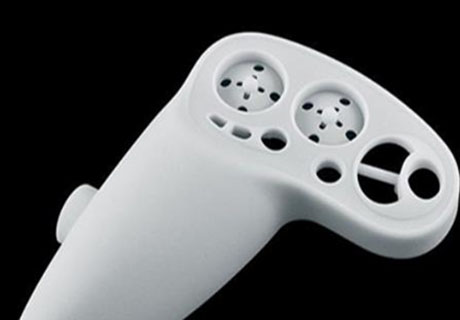
3D printing materials - photosensitive resin
Introduction: The resin is a thermosetting photopolymer that cures when exposed to light, producing highly detailed areas and providing a smooth surface finish on injection moulds.
Accuracy: Tolerance ± 0.5%. (Minimum value: ± 0.05 mm)
Forming: maximum component size 3850mm x 2400mm x 1600mm
Strength: tensile strength 42-50 MPa
Temperature resistance: 40-60 degrees Celsius
Delivery time: up to 12 hours
Applicable: Exhibition models, sculpture decorations, non functional prototype verification of hand boards
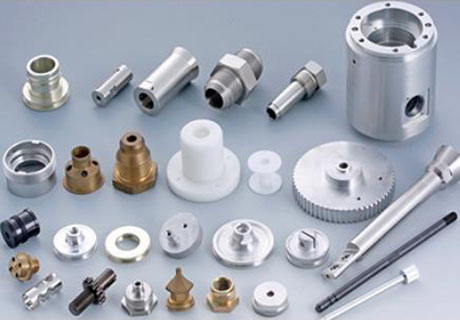
3D printing material - stainless steel 316
Introduction: Stainless steel (DMLS/SLM) has high ductility and excellent corrosion resistance. It produces fully dense components for industrial applications.
Accuracy: tolerance ± 0.1 mm
Forming: The maximum component size is 80 x 50 x 50 centimeters
Strength: tensile strength 42-50 MPa
Temperature resistance: 40-60 degrees Celsius
Delivery time: up to 12 hours
Applicable to: direct manufacturing of components, functional verification, temperature resistance of 850 degrees, military manufacturing
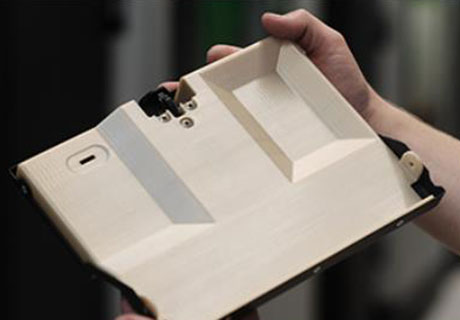
3D printing materials - PLA plastic
Introduction: PLA is a biodegradable thermoplastic for low-cost, non-functional prototyping. It is more detailed than ABS, but more brittle and not suitable for high temperatures.
Accuracy: tolerance ± 0.5% (minimum value: ± 0.05 mm)
Forming: Maximum component size 100 x 100 x 100 centimeters
Strength: tensile strength 42-50 MPa
Temperature resistance: 40-60 degrees Celsius
Delivery time: up to 12 hours
Applicable: educational models, sculpture decorations, material advantages, environmental protection
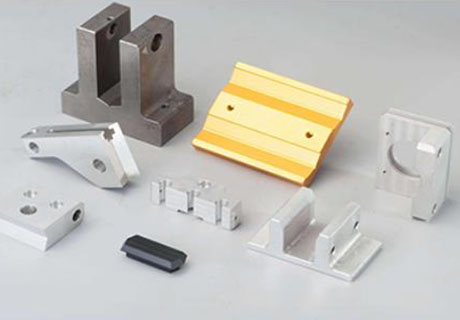
3D Printing Material - Aluminum
Introduction: Aluminum (DMLS/SLM) is a low-density metal with excellent mechanical and thermal properties as well as good conductivity.
Accuracy: tolerance ± 0.1 mm
Forming: The maximum component size is 80 x 50 x 50 centimeters
Strength: tensile strength 42-50 MPa
Temperature resistance: 40-60 degrees Celsius
Delivery time: up to 12 hours
Applicable: structural function verification, small batch metal component manufacturing, temperature resistance of 420 degrees, military manufacturing
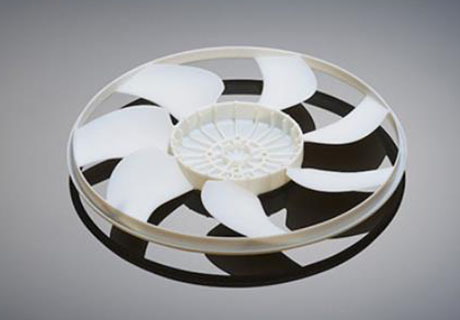
3D printing materials - ABS materials
Introduction: FDM in ABS material is the most widely used 3D printing process, mainly for low-cost prototyping and design verification with very fast turnaround times.
Accuracy: tolerance ± 0.5% (minimum value: ± 0.05 mm)
Forming: Maximum component size 100 x 100 x 100 centimeters
Strength: tensile strength 42-50 MPa
Temperature resistance: 40-60 degrees Celsius
Delivery time: up to 12 hours
Applicable: verification of hand board model, functional verification, material advantages, good smoothness, and temperature resistance of 70 degrees
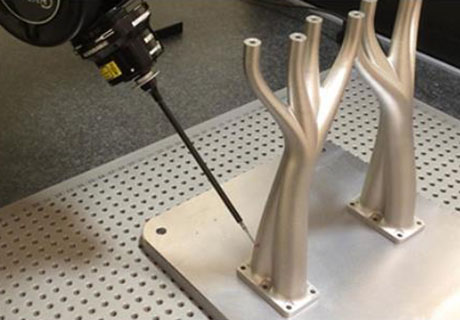
3D Printing Material - Titanium
Introduction: Titanium (DMLS/SLM) has excellent mechanical properties, corrosion resistance, and strength to weight ratio. It has disinfectability and biocompatibility
Accuracy: tolerance ± 0.1 mm
Forming: The maximum component size is 80 x 50 x 50 centimeters
Strength: tensile strength 42-50 MPa
Temperature resistance: 40-60 degrees Celsius
Delivery time: up to 12 hours
Applicable: special verification, functional verification, high-strength component manufacturing, temperature resistance of 1600 degrees Celsius
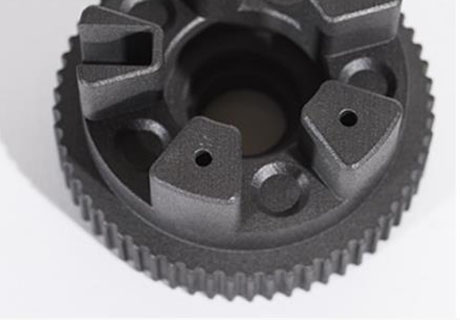
3D printing material - nylon material
Introduction: Nylon or polyamide (PA) is a thermoplastic with excellent mechanical properties, high chemical resistance, and wear resistance. Very suitable for functional applications.
Accuracy: tolerance ± 0.1% (minimum value: ± 0.1 mm)
Forming: Maximum part size 75 x 55 x 55 cm
Strength: tensile strength 42-50 MPa
Temperature resistance: 40-60 degrees Celsius
Delivery time: up to 12 hours
Applicable: verification of hand board model, functional verification, material advantages, good smoothness, temperature resistance of 170 degrees
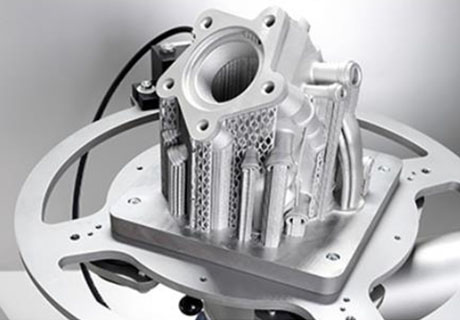
3D printing material - cobalt chromium alloy
Introduction: Cobalt chromium alloy (DMLS/SLM) is a high corrosion and wear resistant material with excellent temperature resistance. Suitable for biomedical applications.
Accuracy: tolerance ± 0.1 mm
Forming: The maximum component size is 80 x 50 x 50 centimeters
Strength: tensile strength 42-50 MPa
Temperature resistance: 40-60 degrees Celsius
Delivery time: up to 12 hours
Applicable: special verification, functional verification, high-strength component manufacturing, military manufacturing
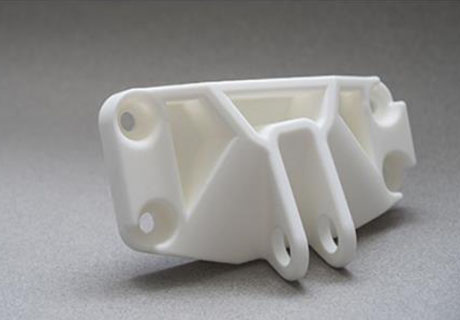
3D printing material - ULTEM plastic
Introduction: ULTEM (FDM) is an engineering plastic with good mechanical properties, excellent heat resistance, chemical resistance, and flame retardancy. Suitable for high-end applications.
Accuracy: tolerance ± 0.5% (minimum value: ± 0.05 mm)
Forming: Maximum component size 100 x 100 x 100 centimeters
Strength: tensile strength 42-50 MPa
Temperature resistance: 40-60 degrees Celsius
Delivery time: up to 12 hours
Applicable: verification of hand board model, functional verification, material advantages, good smoothness, and temperature resistance of 70 degrees
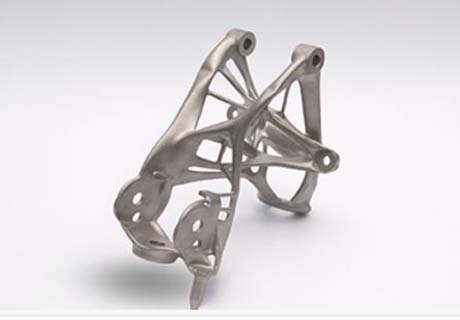
3D Printing Materials - Chromium Nickel Iron Alloy
Introduction: Inconel (DMLS/SLM) is a metal superalloy with excellent tensile, fatigue, creep, and fracture strength, making it an ideal choice for high-temperature applications.
Accuracy: tolerance ± 0.1 mm
Forming: The maximum component size is 80 x 50 x 50 centimeters
Strength: tensile strength 42-50 MPa
Temperature resistance: 40-60 degrees Celsius
Delivery time: up to 12 hours
Applicable: special verification, functional verification, high-strength component manufacturing, military manufacturing
3D printing equipment and capabilities
As a professional 3D printing company, we have 50 SLA resin 3D printers, as well as 6 SLS nylon 3D printers and metal 3D printers. We have a wide range of 3D printing materials to choose from, as well as a variety of post-processing techniques and complete outsourced machining capabilities. We provide 3D printing, replication and colouring services, and have established a dedicated model making business team with excellent display analysis and design capabilities. We have strict quality management system certification. We have rich experience in automotive, household appliances, office equipment, architectural models, medical and dental, jewellery, sculpture, ceramics and other industries.
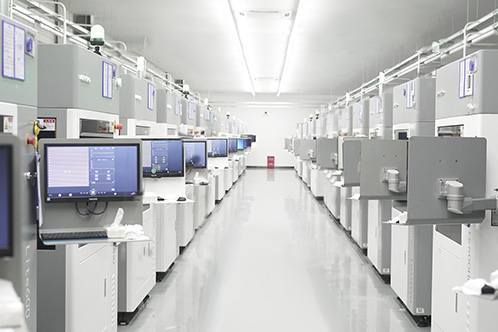
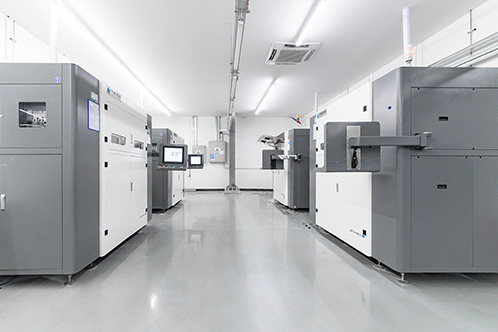
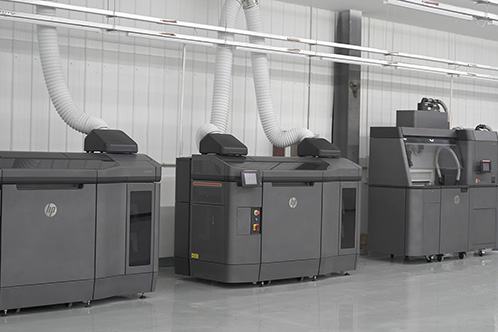
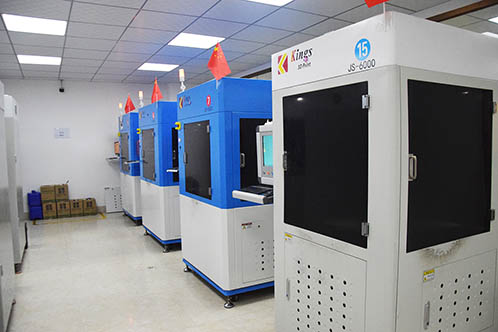
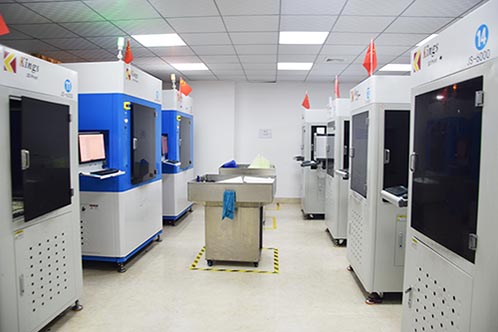
Part 3D printing Frequently Asked Questions
What is 3D printing service?
3D printing services is a professional service that offers the ability to convert digital designs into physical objects using 3D printing technology. It provides individuals, businesses and organisations with the means to bring their ideas to life using specialist equipment and expertise in the field of additive manufacturing. Customers can submit their digital models or designs to a service provider, who then uses 3D printers to create physical objects layer-by-layer according to the specifications provided.3D printing services can offer a range of materials, finishes and printing techniques to suit a variety of needs and applications. This service is commonly used for prototyping, product development, customisation and small-scale production. It offers benefits such as fast turnaround times, design flexibility, cost-effectiveness in small-volume production, and the ability to create complex geometries that would be difficult to achieve with traditional manufacturing methods.3D printing services have revolutionised the manufacturing landscape, enabling innovation, customisation and rapid product development across a wide range of industries.
How does 3D printing work?
3D printing, also known as additive manufacturing, is a process that builds physical objects layer by layer using computer-controlled machines. Here is a professional explanation of how 3D printing works:
- Design: The process begins with a digital 3D model of the object created using computer-aided design (CAD) software or obtained from a 3D model repository.
- Slicing: The 3D model is then sliced into thin layers using specialized software. Each layer is a thin cross-section of the object, typically ranging from fractions of a millimeter to a few millimeters thick.
- Preparation: The sliced model is prepared for printing by specifying the printing parameters such as layer thickness, infill density, and support structures if required.
- Printing: The prepared model is sent to a 3D printer, which interprets the instructions and begins the printing process. The printer typically uses one of several additive manufacturing technologies, such as fused deposition modeling (FDM), stereolithography (SLA), or selective laser sintering (SLS).
- Layer-by-Layer Building: The 3D printer starts building the object by depositing or solidifying material layer by layer. The specific method depends on the technology used. For example, in FDM, a thermoplastic filament is heated and extruded through a nozzle, while in SLA, a liquid resin is cured layer by layer using a UV laser.
- Support Structures: If the design requires overhangs or complex geometries, temporary support structures may be added during printing to ensure stability. These supports can be removed after printing is complete.
- Finishing: Once the object is fully printed, it may require post-processing steps such as removing support structures, sanding, polishing, or applying surface treatments to achieve the desired final appearance and smoothness.
The key advantage of 3D printing is its ability to create complex shapes and intricate details with high precision. The process offers design freedom, enabling the production of customized and unique objects. It is used in various industries, including aerospace, automotive, healthcare, and consumer goods, for prototyping, product development, and small-scale manufacturing.
Overall, 3D printing is a transformative manufacturing technology that allows for the efficient and precise creation of objects by building them layer by layer using digital designs and additive processes.
What are the advantages of using a 3D printing service?
Using a 3D printing service offers several advantages for individuals and businesses. Here is a professional explanation of the benefits:
- Design Freedom: 3D printing allows for intricate and complex designs that are difficult or impossible to achieve with traditional manufacturing methods. It offers greater design freedom and flexibility, enabling the production of geometrically complex and customized objects.
- Rapid Prototyping: 3D printing enables the quick and cost-effective production of prototypes. It allows designers and engineers to iterate designs rapidly, test functionality, and identify improvements before committing to expensive tooling and production processes.
- Customization and Personalization: With 3D printing, it is possible to create highly customized objects tailored to specific needs or preferences. This level of customization can range from individualized product variations to personalized medical devices or consumer goods.
- Cost-Effective for Small Production Runs: 3D printing eliminates the need for expensive molds, tooling, and setup costs associated with traditional manufacturing. It is particularly cost-effective for small-batch or low-volume production, reducing upfront investment and enabling on-demand manufacturing.
- Reduced Time-to-Market: 3D printing significantly reduces the time required to bring a product from concept to market. The ability to quickly produce prototypes and iterate designs accelerates the product development process, enabling faster market entry and competitive advantage.
- Complexity at No Extra Cost: Unlike traditional manufacturing methods, 3D printing does not incur additional costs for complex designs. The cost remains consistent regardless of the complexity, allowing for intricate and detailed objects without added expenses.
- On-Demand Manufacturing: 3D printing enables on-demand production, allowing businesses to manufacture products as needed. This reduces inventory costs, enables just-in-time manufacturing, and facilitates product customization or personalization for individual customers.
- Reduced Material Waste: Additive manufacturing is an inherently more sustainable process compared to subtractive manufacturing. It only uses the required amount of material, minimizing waste and reducing environmental impact.
- Geographical Flexibility: 3D printing services can be accessed remotely, providing geographical flexibility. Customers can upload their designs online and have them printed by a service provider located anywhere in the world, expanding access to specialized manufacturing capabilities.
- Innovation and Prototyping Accessibility: 3D printing services democratize innovation by making advanced manufacturing technologies accessible to a wider audience. Startups, entrepreneurs, and individuals can leverage 3D printing services to bring their ideas to life without significant upfront investment or extensive manufacturing expertise.
These advantages make 3D printing services a valuable tool for product development, customization, small-scale manufacturing, and driving innovation across various industries.
What types of materials can be used in 3D printing?
3D printing technology offers a wide range of materials that can be used to create objects with varying properties and characteristics. Here is a professional overview of the types of materials commonly used in 3D printing:
- Thermoplastics: The most commonly used material in 3D printing is thermoplastics, which can be melted and solidified repeatedly. Examples include PLA (Polylactic Acid) and ABS (Acrylonitrile Butadiene Styrene), known for their versatility, strength, and ease of use.
- Photopolymers: These are liquid resins that solidify when exposed to specific wavelengths of light, commonly used in Stereolithography (SLA) and Digital Light Processing (DLP) printers. Photopolymers offer high detail and smooth finishes, making them suitable for applications requiring intricate designs or visual aesthetics.
- Metals: Metal 3D printing utilizes metal powders, such as titanium, stainless steel, aluminum, copper, or nickel alloys. The process, known as Direct Metal Laser Sintering (DMLS) or Selective Laser Melting (SLM), selectively melts and fuses the metal powders layer by layer, resulting in strong and durable metal parts.
- Ceramics: Ceramic materials, such as alumina, zirconia, or porcelain, can be used in 3D printing for applications like dental restorations, jewelry, or customized ceramic components. Ceramic 3D printing involves a process called binder jetting or powder bed fusion.
- Composites: Composite materials combine multiple components to achieve specific properties. For instance, carbon fiber-reinforced polymers can be 3D printed, resulting in lightweight, high-strength parts used in aerospace, automotive, and sporting goods industries.
- Elastomers: Flexible and rubber-like materials, known as elastomers or TPE (Thermoplastic Elastomers), are used when flexibility, impact resistance, or cushioning properties are required. These materials are suitable for creating gaskets, seals, and soft-touch applications.
- Bioinks and Biomaterials: 3D bioprinting utilizes specialized bioinks and biomaterials to create living tissues and organs. These materials are often composed of living cells, hydrogels, and other biocompatible substances, enabling advancements in regenerative medicine and tissue engineering.
- Others: There are various other materials used in 3D printing, including gypsum-based powders for full-color 3D printing, wax for investment casting, and food-grade materials for creating edible objects or customized confectionery.
It's important to note that the availability of materials may vary depending on the specific 3D printing technology and the capabilities of the 3D printing service provider. Each material has its own unique properties, such as strength, flexibility, heat resistance, or transparency, allowing for a wide range of applications across industries.
Can I print functional and durable parts with 3D printing?
Yes, 3D printing is capable of producing functional and durable parts, although the specific performance characteristics may vary depending on the printing technology, material used, and design considerations. Here is a professional explanation:
- Material Selection: Choosing the right material is crucial for producing functional and durable parts. There are many options available, including various thermoplastics, metals, and composite materials, each with their own strengths and properties. For example, engineering-grade thermoplastics like ABS or nylon offer good mechanical strength, while metal 3D printing can produce parts with high strength and heat resistance.
- Design Considerations: Design plays a significant role in the functionality and durability of 3D-printed parts. Proper engineering practices, such as optimizing wall thickness, incorporating structural supports, and designing for load distribution, can enhance the strength and performance of the printed parts. Reinforcing features like ribs, fillets, or lattice structures can improve the structural integrity of the parts.
- Post-Processing Techniques: Post-processing techniques can further enhance the functional and durable properties of 3D-printed parts. For example, heat treatment or annealing of metal parts can improve their mechanical properties, while post-curing of photopolymer resin parts can enhance their strength and stability. Surface finishing techniques like sanding, polishing, or coating can improve aesthetics and resistance to wear or corrosion.
- Iterative Design and Testing: 3D printing offers the advantage of rapid prototyping, allowing for iterative design and testing. By producing multiple iterations of a part, testing them, and making design modifications based on the results, it is possible to optimize the functionality and durability of the final printed part.
- Material Testing and Validation: Material manufacturers and 3D printing service providers often provide data on the mechanical properties of their materials. These data can help in selecting the appropriate material for specific applications and ensure that the desired functional and durable requirements are met.
While 3D printing has made significant advancements in producing functional and durable parts, it's worth noting that the properties of 3D-printed parts may differ from those manufactured using traditional methods. Factors such as layer adhesion, anisotropy, and surface finish may impact the overall performance. Therefore, it is important to consider the specific requirements of the application and conduct testing and validation to ensure the suitability of 3D-printed parts for their intended use.
What is the typical turnaround time for a 3D printing project?
The turnaround time for a 3D printing project can vary depending on several factors, including the complexity of the design, the size of the object, the chosen 3D printing technology, the materials used, and the capacity and workload of the 3D printing service provider. Here is a professional explanation of the typical turnaround time:
- Small and Simple Objects: For small and relatively simple objects, such as small prototypes or basic shapes, the turnaround time can be relatively quick. It may range from a few hours to a couple of days. These objects require less printing time and minimal post-processing, resulting in faster completion.
- Medium-Sized and Complex Objects: As the size and complexity of the object increase, the turnaround time generally extends. Objects with intricate designs, moving parts, or higher levels of detail may require longer printing times. Depending on the size and complexity, the turnaround time can range from a few days to a couple of weeks.
- Large-Scale Objects: Printing large-scale objects can significantly impact the turnaround time. Printing larger objects takes more time due to the increased number of layers and printing volume. Additionally, larger objects may require additional considerations, such as print bed size limitations or the need to divide the object into multiple parts for assembly. Turnaround time for large-scale objects can range from several days to several weeks.
- Material Considerations: Different materials have varying printing requirements and characteristics. Some materials may require additional post-processing steps, such as curing, annealing, or support removal, which can extend the overall turnaround time. The availability of specific materials and their associated processing times can also affect the project timeline.
- Service Provider Capacity: The workload and capacity of the 3D printing service provider can influence the turnaround time. Providers with high demand or limited resources may have longer lead times. It is advisable to check with the service provider regarding their current workload and estimated project completion time.
It's important to note that these turnaround times are general guidelines and can vary significantly depending on the specific project and circumstances. For time-sensitive projects, it is recommended to communicate your requirements and deadlines with the 3D printing service provider to determine the feasibility of meeting your timeline.
How accurate and precise are the prints from a 3D printing service?
The accuracy and precision of prints from a 3D printing service can vary depending on several factors, including the chosen 3D printing technology, the capabilities of the printer, the quality of the design file, and the expertise of the service provider. Here is a professional explanation of the accuracy and precision in 3D printing:
- Layer Resolution: The layer resolution refers to the thickness of each layer deposited during the printing process. Smaller layer thickness allows for finer details and smoother surfaces, resulting in higher accuracy and precision. However, it's important to note that achieving very fine layer resolutions may increase printing time and cost.
- Printing Technology: Different 3D printing technologies have varying levels of accuracy and precision. For example, technologies like Stereolithography (SLA) or Digital Light Processing (DLP) offer high-resolution prints with excellent detail and surface finish. On the other hand, Fused Deposition Modeling (FDM) or Selective Laser Sintering (SLS) may have slightly lower accuracy due to the nature of layer-by-layer deposition.
- Printer Calibration and Maintenance: Proper calibration and maintenance of the 3D printer are crucial for achieving accurate and precise prints. Regular calibration ensures that the printer's motion system, extrusion system, and other components are in optimal condition, minimizing errors and deviations.
- Design Considerations: The design file's quality and suitability for 3D printing can affect the accuracy and precision of the prints. Design files should be properly prepared, taking into account factors such as wall thickness, tolerances, support structures, and considerations for the specific 3D printing technology being used. Well-designed files can help achieve better accuracy and minimize issues like warping or distortion.
- Expertise of the Service Provider: The expertise and experience of the 3D printing service provider play a significant role in achieving accurate and precise prints. Providers with a deep understanding of the printing technology, materials, and design considerations are more likely to produce high-quality prints. They can offer guidance on optimizing designs, selecting appropriate materials, and fine-tuning print settings for optimal results.
It's important to note that while 3D printing technology has made significant advancements, achieving absolute accuracy and precision comparable to traditional manufacturing methods may have limitations. Factors such as layer adhesion, thermal expansion, or post-processing steps can introduce slight deviations. Therefore, it's advisable to discuss your specific accuracy requirements with the 3D printing service provider and consider conducting test prints or prototypes to verify the desired level of accuracy and precision before proceeding with full-scale production.
How do I choose the right 3D printing service for my project?
Choosing the right 3D printing service for your project requires careful consideration of several factors. Here are some professional tips to help you make an informed decision:
- Project Requirements: Clearly define your project requirements, including the desired object specifications, material needs, required accuracy, quantity, budget, and timeline. Having a clear understanding of your project goals will help you evaluate whether a particular 3D printing service can meet your needs.
- Technology and Materials: Understand the 3D printing technologies and materials offered by the service providers. Different technologies have varying capabilities and material options. Ensure that the service provider offers the specific technology and materials suitable for your project. Consider factors such as strength, flexibility, heat resistance, and surface finish requirements when evaluating material options.
- Quality and Capabilities: Assess the quality and capabilities of the 3D printing service provider. Look for their expertise in the specific printing technology you require. Check their portfolio, reviews, and testimonials to gauge the quality of their previous work. Inquire about their equipment, maintenance practices, and quality control measures to ensure consistent and reliable results.
- Additional Services: Consider whether the service provider offers additional services that may be relevant to your project. These could include design assistance, prototyping, post-processing (such as sanding, polishing, or painting), and finishing services. Having these additional services available can streamline your project workflow and ensure a more comprehensive solution.
- Pricing and Cost Transparency: Request quotes from multiple service providers and compare their pricing structures. Evaluate the pricing based on factors such as material usage, machine time, post-processing, and any additional services required. Ensure that the service provider is transparent about their pricing and any potential additional costs to avoid surprises later.
- Communication and Support: Evaluate the responsiveness and communication of the service provider. Prompt and clear communication throughout the project is crucial for addressing any queries, concerns, or design iterations. A responsive and supportive service provider can provide guidance, technical expertise, and assistance during the entire process.
- Confidentiality and Intellectual Property: If your project involves sensitive or proprietary information, ensure that the service provider has appropriate confidentiality measures in place. Discuss and sign a non-disclosure agreement (NDA) if necessary to protect your intellectual property rights.
- Location and Logistics: Consider the location of the service provider and the logistics involved in shipping and receiving the printed parts. Local providers may offer faster turnaround times and easier communication, while international providers may offer cost advantages. Evaluate the shipping costs, transit times, and any potential customs or import/export considerations.
- Reviews and Recommendations: Seek recommendations from colleagues, industry professionals, or online communities to gather insights about reputable 3D printing service providers. Read reviews and testimonials to gauge the experiences of past clients.
By carefully considering these factors and evaluating multiple options, you can select a 3D printing service provider that aligns with your project requirements, delivers high-quality results, and provides the necessary support throughout the process.
Are there any limitations to what can be 3D printed?
Yes, there are limitations to what can be 3D printed. While 3D printing technology has advanced significantly, it still has certain constraints and limitations that should be considered. Here are some key limitations:
- Size and Scale: 3D printers have limitations on the maximum size of objects they can print. The build volume of the printer determines the maximum dimensions of the object. Large-scale objects may require specialized or industrial-grade printers, and printing them can be time-consuming and expensive.
- Geometry and Complexity: Certain geometries and complex designs may pose challenges for 3D printing. Overhangs, unsupported structures, or intricate details may require the use of support structures, which may need to be manually removed or may leave marks on the final print. Design files need to be carefully prepared to ensure printability and avoid issues like warping or collapsing during the printing process.
- Material Selection: While there is a wide range of materials available for 3D printing, not all materials can be used for all types of 3D printing technologies. Each printer and technology has specific material compatibility requirements. Some materials may have limitations in terms of strength, temperature resistance, or other mechanical properties. Additionally, specialized materials like certain metals or ceramics may require advanced or specialized equipment.
- Surface Finish and Texture: The surface finish of 3D-printed objects may not be as smooth or refined as those produced by traditional manufacturing methods. Layer lines or surface imperfections may be visible, especially in FDM or SLS prints. Additional post-processing steps such as sanding, polishing, or coating may be required to achieve the desired surface finish.
- Material Properties and Performance: While 3D-printed parts can exhibit strength and durability, they may have different material properties compared to parts manufactured using traditional methods. Anisotropic properties, lower heat resistance, or reduced mechanical strength in specific directions are some factors to consider. Material selection and design optimization are important to ensure the printed parts meet the required performance criteria.
- Cost and Time: 3D printing can be cost-effective for certain applications, but it may not always be the most economical choice for large-scale production or when traditional manufacturing methods are better suited. Printing large or complex objects can be time-consuming, and the cost can increase with factors like size, material usage, and post-processing requirements.
It's important to consider these limitations when evaluating the feasibility of a 3D printing project. Collaboration with experienced professionals and understanding the capabilities and constraints of the chosen 3D printing technology and materials can help overcome these limitations and achieve successful outcomes.
